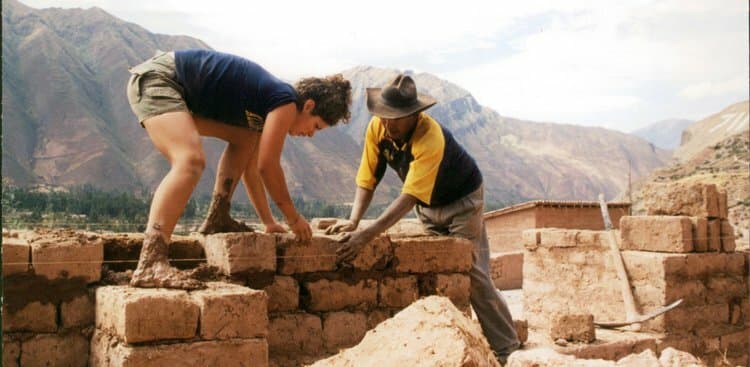You’ve done your research and found the perfect volunteer project. And now, after much planning and preparation, it’s time to head to the field and start working.
Taking on a volunteer opportunity is exciting, but it may seem intimidating: The work can be hard, the learning curve is steep, and you’ll be dealing with different personalities from all over the world. It’s a little bit like starting a new job (minus, of course, the paycheck).
But if you go in knowing a bit about what to expect, you’ll be up to speed in no time. Here are a few ways to find success and make an impact on the ground.
Adapt to the Culture
If you’re headed abroad to volunteer, you’ll have to spend time getting used to a new set of cultural norms. For instance, no matter where you choose to volunteer, you’ll probably find yourself doing a lot of relationship building and chatting before getting down to business.
But, you’ll also have to adapt to the culture of the organization. Pay attention to the rules, traditions, and processes going on around you, and try to follow along. If staff and volunteers all share a meal together, make sure you eat with them. If there’s a daily schedule, follow it. If you get on the ground and find that everyone knows the local language, make an effort to learn it—even if there’s no official language requirement.
Also observe carefully if the organization is run from the top down (where decisions are made by the director or board of directors), or bottom-up with ideas being generated from volunteers and staff. Understanding how decisions are made can help you develop a strategy for how you will get things accomplished.
And, like anything, don’t worry if the first few days are bumpy. It might take time to really understand how things work.
Be Open and Flexible
Imagine you are running a workshop about land rights in the same lecture style you would at your university back home. But you are in a new culture now, and the participants from local NGOs are either not listening or have fallen asleep. Do you get upset and call them out, or do you let it slide?
The best strategy might actually be to change up the style of your workshop after thinking about what might work best for your audience. The truth is, things change on the ground, and much of your success as a volunteer will be based on how you’re able to adapt, shift gears, and come up with creative solutions to the problems you face. When volunteering, I’ve had to deal with everything from floods to cars breaking down in the middle of nowhere to the community deciding it simply doesn’t want to go through with what we had planned. And let me tell you: You don’t want to be the person having a major breakdown when things don’t go as planned.
You should expect your organization to change daily, too—from the staff and volunteers to meeting times to daily expectations. Be welcoming, be open, and remember that quick thinking and innovation is always appreciated.
Stay Relevant and Realistic
While lecturing in the British Virgin Islands, I learned of a visiting school group from the U.S. launching a new project for modern toilets on the island. The group went from house to house, installing new high-powered bathrooms to replace the outhouses in some of the older sections of the island. Many of the homeowners didn’t realize what the group was building, and when they found out, they were livid—not only would the plumbing be a challenge, but now these toilets would cost each house more money to keep up.
I’ve shared before the importance of planning a project that’s relevant to the local culture and sustainable once you leave, but it bears repeating, because when you’re on the ground, it can be easy to identify new ways to “improve” your organization or the local community without thinking through the full ramifications. While, for example, building a playground for the youth camp you’re working at might seem like a great idea, if there’s no one to maintain it after you leave, it will just end up broken and rusty.
Also, keep in mind that while there may be real ways to improve your organization, change often comes slowly. Wait for the right time and place to suggest ideas, and don’t expect an overhaul overnight. One strategy I’ve found helpful is to create a “parking lot,” or list, of ideas that you can offer up when the time is right or come back to if someone ever wants to pick your brain. Keep what you can do realistic and within the framework of your organization.
Sustain Relationships Back Home
Before you leave, think about whether you will be doing follow-up work back home, whether it’s sponsoring an initiative or making a small monthly donation, and be clear with your volunteer team and the staff about it. It’s also important to be honest about how often you can keep in touch. Communities with a strong NGO presence are used to seeing volunteers rotate in and out of their communities with little expectation that they will come back, but other communities that are new to the presence of volunteers may expect you to stay long-term and feel deserted. Plan to make a graceful and gracious exit.
Also consider how you’ll apply what you learn in the field to your life back home. Did you take a risk you normally wouldn’t? Have your views been changed about poverty and aid? Did you pick up a new skill that you’d love to incorporate into your job back home? You will always carry your experience with you, but reflect upon how it could apply to your future goals and how you can apply your daily routine in the field to life back home.
A colleague of mine who is the director of a shelter for girls gives this advice to her volunteers: “Be curious, be proactive, and set an example.” And it’s true. Navigating the volunteer industry can be challenging, but with these tips in mind, you will make an impact and make the most of your experience on the ground.
Related Reading

